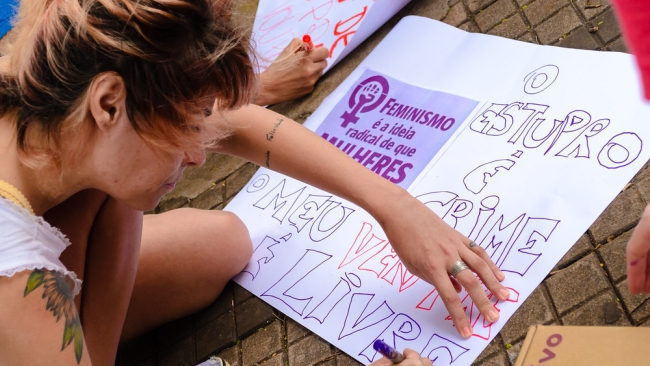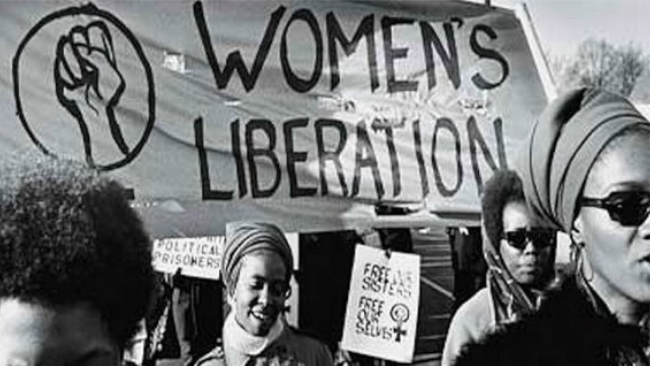Feminism is one of the fastest growing social movements in Brazil and in the world.
Its main purpose is to eradicate sexist actions and culture and guarantee the political and social rights of women.
However, as with other movements, feminism began to be divided into numerous strands. Each one has specific cuts and fights, with the same greater purpose.
Below we list the four main strands of the feminist movement and their characteristics.
radical feminist movement
Radical feminism is the ideology of the feminist movement that emphasizes the patriarchal roots of inequality between men and women, or, more specifically, the social domination of women by men.
This strand of the movement sees patriarchy as a great divider of rights, privileges and power in society.
The division, in the justification of radical feminism, occurs mainly along the lines of gender ideology, which would result in the oppression of women and the maintenance of privileges for men.

Radical feminism opposes the existing political and social organization in general because it is inherently linked to patriarchy. Thus, radical feminists tend to be skeptical of political action within the current system.
They focus on the cultural change that serves as the root of patriarchy and the hierarchical structures associated with it.
The name of this ideology is often confused with radicalism.. However, the name was really born from the root word.
That's why radical feminists have as a cause "get to the root" the social issue of gender inequality.
A radical feminist seeks to undo the patriarchal model on which society is organized rather than tweaking the system through legal changes.
Another important point of this aspect is that pornography and prostitution are seen as an exploitation of the female body, which is why they are not accepted within the movement.
Furthermore, it is common for radical feminists to problematize the issues of makeup and fashion because they believe that these elements are social impositions for women.
liberal feminist movement
Liberal feminism is the strand that focuses more on issues such as equality in the workplace, education and political rights.
Feminists from this strand claim to have found the problem of machismo in the law, and that is why they seek to confront the judicial system.
It is the only aspect that does not problematize capitalism and believes that women should be included in the labor market in a fair and equal way. It also demonstrates the clear connection this feminist line has with liberalism., which inspired the name of the same.
It also accepts men in the movement, a fact that does not occur in radical feminism. This aspect was well known through the movement He For She (He for Her), by the American actress Emma Watson.

The main goals of liberal feminism are:
- gender equality in the public sphere;
- equal access to education;
- equal pay;
- end of sex segregation at work;
- better conditions in the labor market.
All of these goals are mainly achieved through legal changes.
Liberal feminism also tends to rely on the state and political rights for equality, to see the state as the protector of individual rights.
Learn more about the meaning of liberalism.
intersectional feminist movement
The word intersectional was first used by the scholar and civil rights advocate Kimberle Crenshaw in 1989.
While still studying to be a lawyer, she saw that gender and race were seen as completely separate issues.
For Crenshaw, studying them in isolation made no sense. She saw that black women, for example, are doubly discriminated against, particularly in the law.
 Kimberle Crenshaw.
Kimberle Crenshaw.
Despite coining the term, Crenshaw has always admitted that she is not the first to express its true meaning.
He cited that women, such as one of the great activists of the 19th century, Anna Cooper and even Angela Davis, prominent political activist of the movement, spoke of the intersectional importance within this current. feminist.
Today intersectionality encompasses more than just the intersections of race and gender.
Now the term is widely used to illustrate the interaction between any kind of discrimination., Be her:
- sex;
- breed;
- age;
- class;
- socioeconomic status;
- physical or mental ability;
- gender or sexual identity;
- religion or ethnicity.
The purpose of intersectional feminism is listen to different types of feminists, alerting to the fact that life experiences are based on how their multiple identities mix.
Intersectionality is the complex way in which the effects of different forms of discrimination combine, overlap or even intersect.
This means that discrimination does not exist in a social bubble, different types of prejudice can be amplified in different ways when they occur together.
black feminist movement
The black feminist movement was born to meet the need for representation of black women within feminism.
Its main support is that the experience of black women gives rise to a particular understanding of their position in relation to sexism, class oppression and racism.
A major focus of the movement is to develop theories that could adequately address the way race, gender and class are intertwined in women's lives.
Thus, measures against racist, sexist and class discrimination can be taken within a single movement.

In the first wave of feminists, the movement was basically represented by white women from upper economic classes and who claimed the same civil rights as men.
The point is that, throughout the hegemonic struggle of feminism, black women realized that they had no representation of the racial cut within the movement.
This was one of the great drivers for the origin of the current of black feminism, since the social space of black women was different due to the struggle against the also structured racism.
It was then that from the second wave of feminists, in 1960, black feminism began to grow, showing the importance of racial cutting within the movement.
Today it is one of the most prominent feminist lines, with important activists such as Angela Davis, Chimamanda Ngozi Adicheandthe Brazilian Djamila Ribeiro.
See too:
- feminism;
- sorority;
- chauvinism;
- gender equality;
- sexism;
- gender inequality;
- 8 authors who explain the importance of serority.

